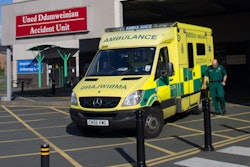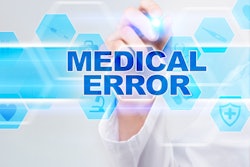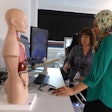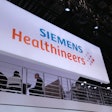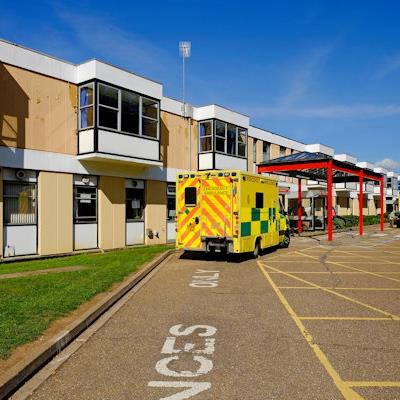
An inquest has heard a 28-year-old man with a heart disorder and chest pain died two days after a doctor at Queen Elizabeth Hospital (QEH) in King's Lynn, U.K., viewed the wrong CT scan and sent him home. Since the incident, the radiology department has changed its procedures and it will soon upgrade the PACS, according to a report posted on 19 October by BBC News.
Lucas Allard went to the 488-bed hospital's accident and emergency (A&E) unit late on 12 March 2019, saying the pain was radiating into his back, shoulders, and abdomen, and tests were carried out. The inquest was told he was discharged when a previous CT image was looked at by mistake.
Allard was recalled to the hospital after the correct scan was seen, but he died soon after he arrived. He suffered a cardiac arrest due to a ruptured aortic aneurysm, the BBC reported.
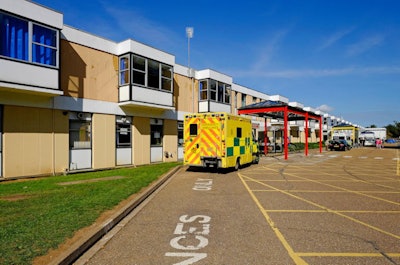 Named after the Queen Mother, the QEH covers the West Norfolk area, South Lincolnshire, and North East Cambridgeshire, an area of around 1500 km² and 250,000 people in the east of England. Photo courtesy of David Burton/Alamy.
Named after the Queen Mother, the QEH covers the West Norfolk area, South Lincolnshire, and North East Cambridgeshire, an area of around 1500 km² and 250,000 people in the east of England. Photo courtesy of David Burton/Alamy.Area coroner Yvonne Blake explained that Allard had Marfan syndrome and had been awaiting heart surgery at Papworth Hospital in Cambridge. The same disorder had caused the death of several members of Allard's family, including his older brother in 2015.
Emergency physician Dr. Masud Isham called up the incorrect CT scan, from the previous November, when assessing the results. It showed nothing critically wrong, while the correct CT scan showed abnormalities in the aorta, the BBC article continued.
"There seemed to be a lot of confusion over the IT system in place at the hospital at the time," said Blake. "I asked him why he discharged a 28-year-old man with crushing chest pain; he knew he had Marfan syndrome, and was awaiting an operation. He said the ECG was normal, there was nothing abnormal about his blood, and he had said the chest pain was subsiding. He said had he seen the [CT] report, he wouldn't have sent him home."
Computer error
A&E consultant Robert Florance told the inquest about the potential effect of fatigue on Isham, who finished his shift two-and-a-half hours later than scheduled. He speculated that Isham was unlikely to have taken a break, adding that he was no longer allowed to finish "beyond midnight."
Also, Florance said he had tried to replicate what Isham may have done while trying to find a CT scan on the IT system, the BBC noted.
"When we click on something and nothing happens, we tend to click on it again, then something opens up behind and I think that's when the other report appeared," he said. "If you have been told there is something there, your brain -- a tired brain -- sees something that may not have occurred."
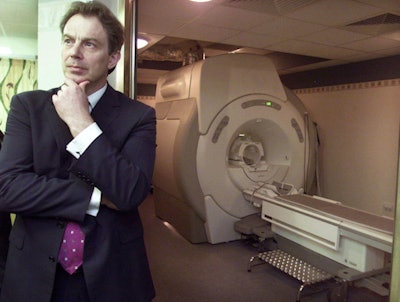 The radiology department at QEH made national headlines in May 2001, when former British Prime Minister Tony Blair paid a visit. Photo courtesy of Reuters/Alamy.
The radiology department at QEH made national headlines in May 2001, when former British Prime Minister Tony Blair paid a visit. Photo courtesy of Reuters/Alamy.Providing evidence, Dr. Jason Smith, a consultant radiologist at QEH, said the hospital was putting in place measures to prevent similar errors, such as upgrading its internal computer systems. He said it was "undeniable" that current systems were "not user-friendly," according to a report posted on 19 October by Eastern Daily Press.
"If radiology had phoned [Isham] themselves, the situation could never have occurred -- they could have told him what the abnormality was," Smith said, adding that when abnormalities are found, radiologists must now phone the doctor who requested a CT scan, instead of asking administrative staff to do so.
The coroner said she was satisfied that various computer systems, which she described as "unwieldy," were due to be replaced by the hospital in May 2021.
The QEH has two Philips 64-slice CT scanners, three Hitachi ultrasound rooms, one Philips digital x-ray room, and three Carestream digital x-ray rooms, according to a recent posting on the job.nhs.uk website. The hospital has a Toshiba interventional/screening suite, a GE gamma camera, two GE 450 and 360 MRI scanners, and a purpose-built breast unit. A new Agfa RIS/PACS is due to be installed in the first half of 2021, it stated.



